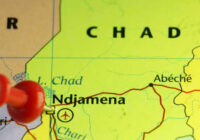A spate of bombings signal a renewed threat of militancy in Pakistan, with groups such as the Taliban and Islamic State demonstrating the ability to strike nationwide.
During the week of February 13, Pakistan suffered a series of terrorist attacks in all four of its provinces: Punjab, Sindh, Balochistan and Khyber Pakhtunkhwa. Jamaat-ul-Ahrar (JuA), a breakaway faction of Tehreek-e-Taliban Pakistan (TTP), claimed the majority of the attacks, followed by TTP and the Islamic State (IS), which claimed the February 16 attack on a Sufi shrine in Sehwan that killed 90 people.
Multiple assaults perpetrated by different militant groups have raised concerns about the heightened presence and capabilities of terrorist groups in Pakistan. IS, JuA and TTP have all demonstrated the ability to conduct gun and IED assaults, as well as large-scale suicide bomb attacks against both government and civilian targets.
Nevertheless, only JuA has managed to conduct attacks in every province of Pakistan, as well as the tribal regions. The assaults came after the group announced the start of “Operation Ghazi” in a video message on February 13, in which it named legislative bodies, media outlets and state institutions as potential targets. Of note in JuA’s video statement was the claim that it would not target crowded areas such as markets and mosques. If true, this signals a divergence from its previous modus operandi. The group has conducted some deadly attacks against civilians in the past, including the March 2016 suicide bombing during Easter celebrations at the Gulshan-e-Iqbal Park in Lahore that killed more than 75 people and wounded 340 others.
The spike in militancy has also increased fears that IS has established a presence in Pakistan. Authorities have long denied that the group has a foothold in the country, despite periodic reports of the arrests of IS operatives and IS claims of attacks in Pakistan, although Pakistani security officials have regularly raised concerns about the Islamic State’s presence in neighboring Afghanistan. The group’s notable claims in Pakistan have mainly been attacks against minority communities. Prior to the Sehwan attack, IS orchestrated a suicide bombing at another Sufi shrine in Khuzdar, Balochistan, in November 2016, killing 52 people.
Moreover, there are concerns that competing militant groups may be collaborating in their activities. In February, General John Nicholson Junior—the commander of US and international forces in Afghanistan—said that TTP militants from Pakistan’s Orakzai tribal agency had formed the Islamic State’s core fighters in Afghanistan, helping the group enhance its capabilities and establish a base in the country. Reports in 2016 also indicated that JuA had largely resolved its differences with the TTP, although it retains autonomy with regard to choosing the targets and means for its attacks. While there have also been reports that JuA has pledged allegiance to IS, there is little evidence to suggest that both groups have joined forces, with JuA adopting a largely neutral approach toward the Islamic State.
Security Response
The current wave of violence is the first major test for new Chief of Army Staff General Qamar Javed Bajwa, who took over from Raheel Sharif in November 2016. Pakistan’s response to the attacks so far appears to follow a familiar pattern. Externally, it has blamed Afghanistan for providing sanctuaries to the perpetrators of the attacks. In an unusual move, Islamabad also conducted cross-border attacks against militant camps in Afghanistan’s eastern Nangarhar province, along with closing the border with Afghanistan.
Domestically, the army launched Operation Radd-ul-Fasaad across the country on February 22, with the aim of “indiscriminately eliminating residual/latent threat of terrorism” and consolidating gains made in earlier campaigns. Authorities claim that tens of “militants” have been killed in air and ground operations, while more than 200 others have been arrested in a matter of days. These developments highlight the risks of exaggerated claims, possible extrajudicial killings and the disregard for the rule of law.
The harsh campaign has also raised concerns of an offensive similar to the largescale and devastating Zarb-e-Arb operation, first launched in North Waziristan in June 2014. While the campaign was successful in dismantling terrorist safe havens and dispersing militants from groups such as the TTP and the Islamic Movement of Uzbekistan to tribal areas across the border in Afghanistan, it did not eliminate the threat.
Porous borders and the Afghan government’s inability to police remote areas have facilitated a steady stream of militant attacks within Pakistan over the past few years, a situation exacerbated by Kabul’s sole focus on preventing the Afghan Taliban from overrunning major provincial capitals such as Lashkar Gah. Cooperation on counterterrorism between both countries has also been hampered by allegations of support for militant groups focused on targeting the other. The Afghan government claims that Islamabad supports the Afghan Taliban and the Haqqani Network, while Pakistan accuses Kabul of turning a blind eye to the TTP’s activities. Given these broader considerations, the long-term impact of yet another offensive by the Pakistani army is unclear.
Outlook
Pakistan appears set for a period of volatility. A fresh nationwide military campaign suggests that security forces conducting raids, killing suspected militants and making mass arrests are likely to continue. The Zarb-e-Azb operation saw more than 3,500 suspected militants and over 500 soldiers killed, and thousands of others arrested during a period of over two years. Concurrently, militant attacks could continue across the country, including reprisals against a stepped-up military offensive.
The United Kingdom Foreign and Commonwealth office issued a travel advisory on February 18 warning travelers to exercise caution in crowded areas, claiming there was evidence to suggest that further attacks were being planned in the capital Islamabad and the military hub of Rawalpindi. Even after the Pakistani government issued a high alert in major cities and mobilized the police, paramilitary and army for counterterrorism operations, JuA militants attacked a local court in Charsadda, Khyber Pakhtunkhwa, on February 21, killing six people. Major cities such as Islamabad and Karachi remain on high alert for possible terrorist attacks.
Further such incidents at greater frequency could point to the return of instability in Pakistan and threaten economic projects that have only started to gain ground after years of intensive counterterrorism operations by the security forces. In particular, heightened insecurity would pose a serious threat to the prospects of the $57 billion China-Pakistan Economic Corridor (CPEC), which was first proposed in 2013 but has seen notable progress in recent months.
Instability would also affect investor confidence in Pakistan, where foreign direct investment grew 10% to nearly $1.1 billion between July and December 2016, with Bloomberg ranking the Pakistan Stock Exchange as the fifth-best performing stock market in the world last year. The turn in investment sentiment has mainly stemmed from an improvement in the security situation, as well as China’s involvement in a range of infrastructure ventures, such as port development, electricity projects, and road and rail networks.
The latest wave of militant violence has so far mainly targeted state personnel and institutions or, in the case of mass-casualty attacks, civilians. Security for CPEC has been helped by the creation of a special force with 15,000 police, army and paramilitary troops dedicated to the security of the projects and personnel involved. However, violence targeted specifically against Chinese personnel or assets would mark a serious escalation and pose the risk of halting progress on the projects.
*[This article is based on a report by PGI Intelligence.]
The views expressed in this article are the author’s own and do not necessarily reflect Fair Observer’s editorial policy.
Photo Credit: PPI-Images
Support Fair Observer
We rely on your support for our independence, diversity and quality.
For more than 10 years, Fair Observer has been free, fair and independent. No billionaire owns us, no advertisers control us. We are a reader-supported nonprofit. Unlike many other publications, we keep our content free for readers regardless of where they live or whether they can afford to pay. We have no paywalls and no ads.
In the post-truth era of fake news, echo chambers and filter bubbles, we publish a plurality of perspectives from around the world. Anyone can publish with us, but everyone goes through a rigorous editorial process. So, you get fact-checked, well-reasoned content instead of noise.
We publish 2,500+ voices from 90+ countries. We also conduct education and training programs
on subjects ranging from digital media and journalism to writing and critical thinking. This
doesn’t come cheap. Servers, editors, trainers and web developers cost
money.
Please consider supporting us on a regular basis as a recurring donor or a
sustaining member.
Will you support FO’s journalism?
We rely on your support for our independence, diversity and quality.









